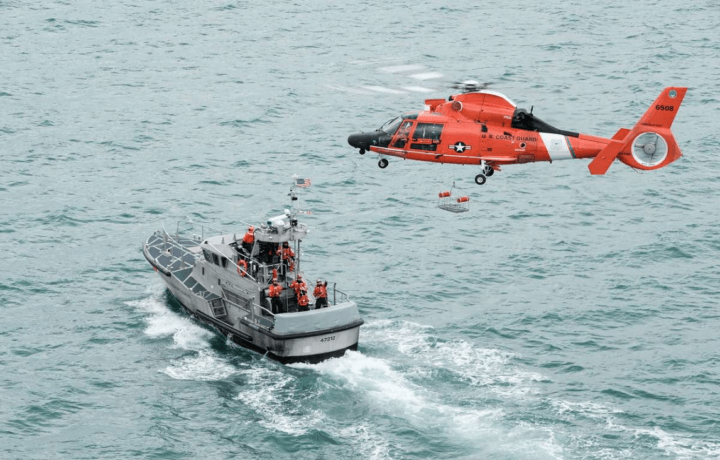The U.S. Coast Guard is having a “lively conversation” about how to potentially expand its deployment of unmanned systems, according to the service’s commandant.
The Coast Guard is closely monitoring some of the unmanned systems work of its larger, better-resourced maritime partner, the U.S. Navy, to see what might be suitable for itself, Adm. Linda Fagan said. That approach is consistent with the Coast Guard’s tendency during its 233-year history to let other agencies with bigger research and development budgets take the lead on equipment modernization.
“We are not necessarily an early adapter of technology; the good news with that, though, is that the kinks tend to get worked out of the technology” by the time the Coast Guard begins using it, Fagan said on Oct. 17 at the Center for Strategic and International Studies in Washington, D.C.
ARTIFICIAL INTELLIGENCE, COMMUNICATIONS NETWORKS
The Coast Guard’s existing uncrewed capabilities include the Boeing/Insitu ScanEagle unmanned aircraft, which is fielded on the National Security Cutter fleet under a contractor-owned, contractor-operated arrangement, Fagan noted. The ScanEagle has reportedly helped the service seize billions of dollars in illegal drugs.
The Coast Guard also has a partnership with U.S. Customs and Border Protection (CBP) that allows it to use CBP’s land-based MQ-9 unmanned aircraft, built by General Atomics Aeronautical Systems Inc.
The Coast Guard’s “Unmanned Systems Strategic Plan,” dated March 2023, says that greater use of unmanned systems could enhance the service’s maritime domain awareness, helping it perform such missions as guiding icebreakers and tracking icebergs and vessel traffic. It calls for the Coast Guard to partner with other government agencies and industry to further develop its unmanned capabilities.
New platforms alone will not suffice, however. Unmanned systems (UxS) “will require a spectrum of core technologies and key enablers to yield their full potential,” the plan says. “The Coast Guard will simultaneously pursue communications networks, data management systems, artificial intelligence, and information dissemination platforms to deploy UxS and maximize the utility of the data they collect.”
The document also highlights the need for the Coast Guard to ensure that the increasing use of unmanned commercial ships occurs legally and safely. It further indicates that the service intends to deploy systems to counter nefarious unmanned systems.
NEW OFFSHORE PATROL CUTTER
Despite the Coast Guard’s growing interest in unmanned technology for its own purposes, its equipment remains dominated by manned systems and is poised to remain that way for the foreseeable future. The service’s new 360-foot Offshore Patrol Cutter (OPC) is a crewed ship and is designed to complement the 460-foot National Security Cutter and the 154-foot Fast Response Cutter, both of which are also manned.
The Coast Guard plans to launch the first OPC, the Argus, at Eastern Shipbuilding Group’s Nelson Street Shipyard in Panama City, FL, on October 27. The second, third, and fourth OPCs are in various stages of construction, and the service intends to buy a total of 25 OPCs.to replace its aging 270-foot and 210-foot Medium Endurance Cutters.
The OPC design is “incredible,” Fagan said. “We’re really looking forward to seeing what those ships can do.”




